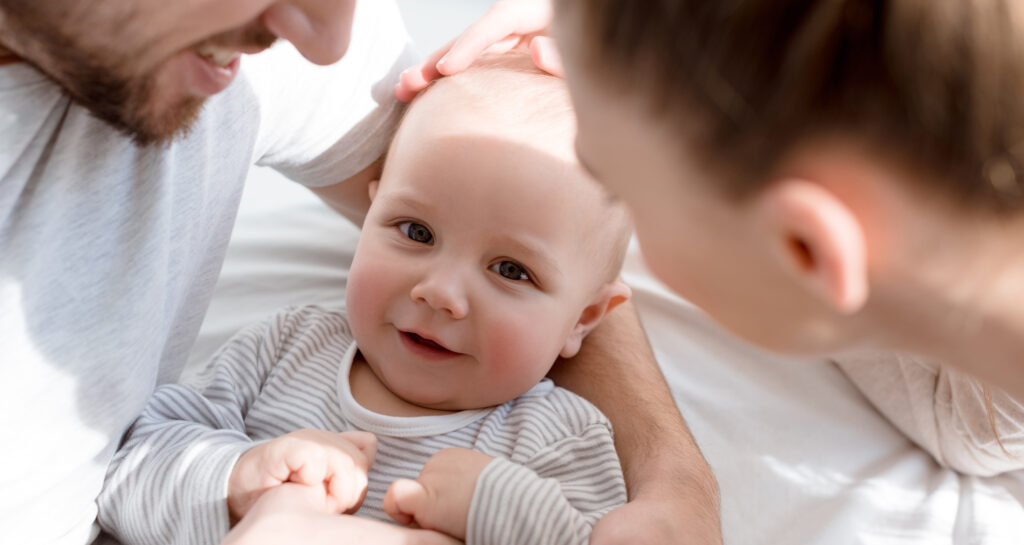What is ‘attachment parenting’? An interview with Dr. Sears
Published on March 2, 2025

“Attachment parenting” is a popular method for nurturing children by forming secure bonds between parents and children. Its tenets are nothing new: fostering healthy development through emotional connection, responsiveness, and physical closeness — think practices like babywearing or breastfeeding.
While no one parenting method is the magic potion, attachment parenting honors the natural parent-child bond that any family can tap into to help their children thrive beyond the early years.
In the late 1970s, pediatrician Dr. Bill Sears and his wife Martha, a registered nurse, popularized the attachment parenting method.
We had the opportunity to chat with the “father” of attachment parenting himself to find out why these parents of 8 children and medical professionals with 50+ years of experience became believers in attachment parenting.
Here’s what we learned.
Why attachment parenting?

According to Dr. Sears, “The core of attachment parenting is giving parents, especially mothers, a tool. Attachment is simply a natural tool to help parents follow their own intuition.”
Attachment parenting follows “7Bs” which are steps to help parents respond to their children with sensitivity and bond with their children from day one:
- Birth bonding
- Breastfeeding
- Baby-wearing
- Bedding close to the baby (safely)
- Belief in the baby’s cry
- Balance and boundaries
- Beware of baby trainers
It’s important to note that the Sears website mentions that this method is an “approach rather than a set of rules, so while [7Bs] are encouraged in this style of parenting, the benefits of Attachment Parenting are not exclusive to those who are able to do all of these things.”
Attachment parenting focuses on meeting a child’s emotional and physical needs to build trust in the early years. By responding promptly to cries as a baby’s language, fostering close physical contact, and creating a secure environment, parents help children develop a foundation of security and empathy.
Sears reaffirmed to Refine that this approach is naturally aligned with maternal instincts:
If the female body is designed to produce the greatest national treasure – our children – naturally, it’s going to be built into a mother’s brain to have a place, almost like a GPS, that tells her how to take care of her baby in the best way that a baby thrives. All babies grow, but thriving means growing to their best, and that’s what attachment parenting is.
He continued, parents “should learn to follow your basic instinct. If our baby cried, I would watch my wife’s response and then ask her ‘how did you know how to respond?’ And she said, ‘I put myself behind the eyes of the baby, and I asked if I were my baby, how would I want my mother to respond?’”
Experience-based beginnings
Sears told Refine that he first saw a need for an intentional approach to attachment parenting while observing his own children as well as his many patients at his pediatric practice.
Even though I trained at the two top children’s hospitals in the world, Martha used to kid, ‘Oh, he only knows about how to care for sick babies.’ And she was right. I didn’t know anything about parenting.
Sears was determined to learn how to become a better parent to his own children and advisor to his patients’ mothers. “My office became a sort of laboratory,” he said. “And when I saw a mother and a baby come in that were really in tune with one another and growing together, I would write down what I observed and I would learn.”
He also shared a personal moment that happened when his fourth child cried inconsolably every time she was placed in her crib as an infant.
Then one night, Martha said to me, ‘I don’t care what the book says. My instinct tells me that Hayden needs to sleep next to me,’ and that was that.
Together, the Sears then poured their energy into researching and writing about age-old baby-bonding methods, producing the manual on what is now called “attachment parenting.” They went on to author multiple best-selling parenting books and offer an extensive digital library on AskDrSears.com.
“When we first started promoting attachment parenting, people would say, ‘What on Earth are you talking about now?’ Now much of it is the standard because parents find it works,” Sears said.
Attachment and older children
Sears says that the bonds formed during pregnancy and the first few years lay the foundation for having a securely attached child throughout childhood to the teenage years and beyond.
“A child’s brain grows the fastest in the first five years,” Sears noted, “and the brain work reaches 90% of its adult volume in those first five. Therefore, it makes sense to give the child the highest dose of attachment when the brain is growing the fastest.”
From enhanced emotional intelligence to empathy and independence, the benefits of attachment parenting are long-lasting. They allow the child to grow with strong communication, proper borders, and age-appropriate discipline.
“Attachment parenting is a mutual building,” Sears explained.
It’s not only for the baby but for the parents. The baby’s brain grows trust. If a baby trusts, feels that they’re loved and cared for, and knows that if they’re having a problem mama or daddy is there to help, the worry center of the brain does not overwhelm the growth center of the brain.
Older children who experienced this nurturing approach as babies often exhibit:
- Enhanced emotional resilience: Children raised with this approach often feel safe expressing their feelings, knowing their parents are there to support them. This helps them build emotional intelligence and cope with stress better as they grow.
- Greater independence: Children who feel secure in their early years are more likely to explore the world with confidence.
- Healthy relationships: The trust built in early years serves as a blueprint for forming strong, respectful relationships later in life.
Does attached = codependent?
A common worry among parents is whether attachment parenting will create an unhealthy codependency. Sears explained that this is the most common misconception of the method.
When children feel securely attached, he explained, they are more likely to develop autonomy. The security they gain from knowing their parents are consistently there for them allows them to venture out with confidence, rather than cling excessively.
Sears also commented that many parents mistake dependence for weakness. In fact, it is precisely by bonding with a vulnerable child that his parents provide him with the foundation he needs to mature into independence.
Think about it – husbands and wives are sort of codependents in some way. Any good relationship that’s founded on trust and reliance has some form of dependency on the other. A codependency simply means you bring out the best in each other. You blend – it helps the baby or the child learn to rely on parents as a trusted resource. And you’re going to want that when they get to be teenagers!
What parents should know
Ultimately the goal of attachment parenting is connection, not perfection.
The method isn’t meant to be a rigid set of rules but rather a toolkit to help you be attuned to your child’s needs. Every family is different, and you should adapt its principles in ways that work for your household, personalities, and the ages of your children.
“I think we’re living in the best time of parenting,” concluded Sears.
Beginning with their birth experience, “mothers are finally taking back control and telling the medical profession: it’s my baby. My body. My birth.” That dedication to remaining in tune with parental intuition then flows into the rest of child-rearing.
Attachment parenting is a lifestyle choice that aims to nurture emotional health, trust, lifelong resilience and relational success. For parents who want to invest in this method, the rewards can be profound and enduring.



